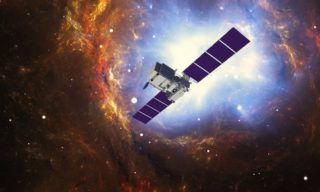Roscosmos and the Chinese National Space Administration have adopted a joint statement on cooperation in the creation of the International Scientific Lunar Station (ISLS).
‘Taking into account the experience of the Russian Federation and the People’s Republic of China in the field of space science, the creation and use of space systems and space technologies, recognizing the mutual interest in the creation of the International Scientific Lunar Station, guided by the legislation of their states, generally recognized principles and norms of international law, international treaties, of which their states are participants, and to cooperate on the principles of equality, openness and honesty, hereby jointly publish a statement on cooperation in the field of creating the ISLS,’ the document reads.
The ISLS is a complex of experimental research facilities created on the surface and/or in Moon orbit with possible involvement of other countries, international organizations and other international partners. It is designed to carry out multidisciplinary and multipurpose research activities, including the exploration and use of the Moon, lunar observations, fundamental research experiments and technology verification with the possibility of long-term unmanned operation with the prospect of ensuring human presence.
Herewith, the parties emphasize that the ISLS is open to all international partners interested in cooperation in the planning, justification, design, development, implementation and operation of the ISLS, strengthening research exchanges and promoting peaceful exploration and use of outer space in the interests of all humankind. The parties welcome the material and non-material contribution of international partners to cooperation in the field of the creation of the ISLS in any aspect of the mission at every stage and are convinced that cooperation will be mutually beneficial for all participants.
Russia and China traditionally strive to develop cooperation in the field of space technologies, space science and the use of outer space. To date, within the interaction in the field of lunar and deep space exploration, an Agreement between Roscosmos and the Chinese National Space Administration has been signed and is being successfully implemented on cooperation within the coordination of the Russian Luna-Resurs-1 orbital spacecraft mission and the Chinese Chang’e-7 lunar polar region research mission, as well as the Agreement between Roscosmos and the Chinese National Space Administration on cooperation to create a joint data center for the exploration of the Moon and deep space.



















